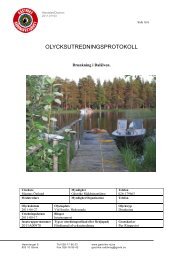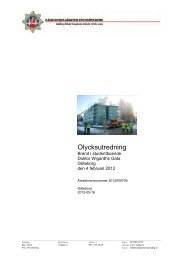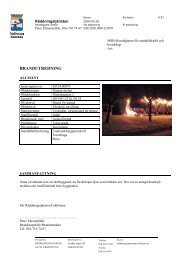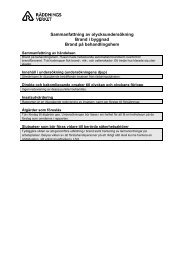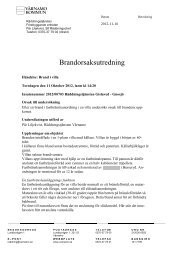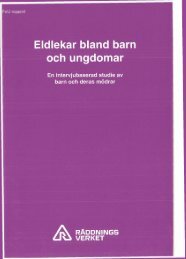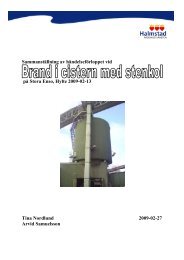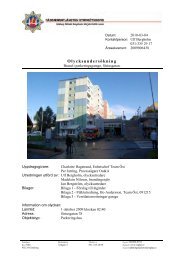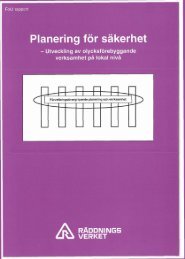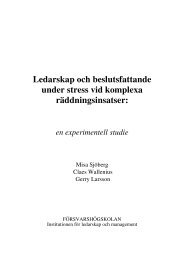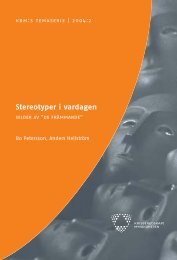You also want an ePaper? Increase the reach of your titles
YUMPU automatically turns print PDFs into web optimized ePapers that Google loves.
tion but also creates a kind of closed<br />
cycle. The same sources, aspects and<br />
angles appear in several media. The<br />
single copy newspapers adopted a<br />
slightly different approach by interviewing<br />
friends and relatives of the suspect to a<br />
greater extent than other media.<br />
The reporting holds all the earmarks<br />
of a classic detective story. Through<br />
family, friends and acquaintances, the<br />
media tried to portray the 35-year-old<br />
suspect and describe his personality,<br />
background and lifestyle. Indirectly,<br />
they tried to form an opinion of his<br />
character and assess the likelihood<br />
that he murdered Anna Lindh. When<br />
lawyers entered the scene, they led the<br />
event and the story into the next phase<br />
and finally to a conclusion, specifically<br />
the court proceedings and a conviction<br />
for murder.<br />
What did the police do<br />
The police were the most frequently<br />
appearing group and source in the<br />
analysed articles and news items. An<br />
interesting question is how the police<br />
and police work are portrayed in the<br />
reporting.<br />
The individual police measure most<br />
frequently reported in the media was<br />
the arrest, custody and remand of the<br />
perpetrator. But the actions leading up<br />
to his arrest constituted most of their<br />
work. In general, the media portrayed<br />
a proactive and dynamic investigation,<br />
and a resolute and effective police force.<br />
To what extent the media gave<br />
a true picture of police measures is<br />
another issue, however, and linked to<br />
the information that the media could<br />
access and acquire. Sources can influence<br />
how, when and what details are<br />
published. News media depend upon<br />
these sources, but the opposite situation<br />
can also occur. In the Anna Lindh<br />
case, for instance, the police used the<br />
media to appeal for witnesses and<br />
information from the general public.<br />
On 11 September, Police Commissioner<br />
Carin Götblad decided that<br />
the investigation would be conducted<br />
as openly as possible. That same day,<br />
it was also decided that press conferences<br />
would be held on a daily basis<br />
and hosted by the Stockholm Police<br />
Service. Guidelines and strategies for<br />
pending information work were drawn<br />
up by police authorities. There was<br />
great awareness of the media’s search<br />
for information and the importance of<br />
providing details and being available<br />
for questions. 151 In an interview on<br />
TV news programme Rapport, on 26<br />
September, Carin Götblad admitted<br />
that police were trained to meet the<br />
media and equipped to handle journalists<br />
when investigating cases of great<br />
public interest.<br />
Some details about police measures<br />
were general knowledge, such as blocking<br />
off areas and examining the crime<br />
scene. The media obtained other information<br />
from sources and witnesses<br />
outside the police organization, i.e.<br />
151. Johansson 2004.<br />
a classic criminal drama | 135




